
The Enchanting Dobrogea Plateau: Romania's Hidden Gem
Discover the Dobrogea Plateau: A stunning mix of natural landscapes, ancient history, and vibrant local culture between the Danube River and the Black Sea.
Nestled between the Danube River and the Black Sea, the Dobrogea Plateau is a region rich with natural beauty and ancient history. This unique landscape is one of Romania's most captivating destinations, offering a blend of rolling hills, lush forests, and stunning coastal views. Visitors can explore the serene countryside, discover historic ruins, and immerse themselves in the local culture. Dobrogea is home to the Danube Delta, a UNESCO World Heritage site renowned for its biodiversity. Birdwatchers and nature enthusiasts will find this area to be a paradise, with over 300 species of birds and a variety of aquatic life. The delta's intricate network of channels and lakes can be explored by boat, providing an intimate experience with nature. The region also boasts a rich cultural heritage. Ancient Greek, Roman, and Byzantine ruins dot the landscape, offering a glimpse into the past. The town of Constanța, Romania's oldest continuously inhabited city, features historical landmarks such as the Roman Mosaic Edifice and the Genoese Lighthouse. The diverse cultural influences are reflected in the local cuisine, which is a delightful blend of Mediterranean and Balkan flavors. For those seeking adventure, the Macin Mountains in the northern part of the plateau offer excellent hiking opportunities. The trails lead to panoramic views and are a great way to experience the natural beauty of the region. Whether you're interested in history, nature, or simply a peaceful getaway, the Dobrogea Plateau has something to offer every traveler.
Local tips in Dobrogea Plateau
- Visit in spring or autumn for the best weather and fewer crowds.
- Take a boat tour in the Danube Delta for an unforgettable wildlife experience.
- Pack comfortable hiking shoes for exploring the Macin Mountains.
- Try the local fish dishes, which are a specialty in this region.
- Carry cash, as some rural areas may have limited access to ATMs.
The Enchanting Dobrogea Plateau: Romania's Hidden Gem
Nestled between the Danube River and the Black Sea, the Dobrogea Plateau is a region rich with natural beauty and ancient history. This unique landscape is one of Romania's most captivating destinations, offering a blend of rolling hills, lush forests, and stunning coastal views. Visitors can explore the serene countryside, discover historic ruins, and immerse themselves in the local culture. Dobrogea is home to the Danube Delta, a UNESCO World Heritage site renowned for its biodiversity. Birdwatchers and nature enthusiasts will find this area to be a paradise, with over 300 species of birds and a variety of aquatic life. The delta's intricate network of channels and lakes can be explored by boat, providing an intimate experience with nature. The region also boasts a rich cultural heritage. Ancient Greek, Roman, and Byzantine ruins dot the landscape, offering a glimpse into the past. The town of Constanța, Romania's oldest continuously inhabited city, features historical landmarks such as the Roman Mosaic Edifice and the Genoese Lighthouse. The diverse cultural influences are reflected in the local cuisine, which is a delightful blend of Mediterranean and Balkan flavors. For those seeking adventure, the Macin Mountains in the northern part of the plateau offer excellent hiking opportunities. The trails lead to panoramic views and are a great way to experience the natural beauty of the region. Whether you're interested in history, nature, or simply a peaceful getaway, the Dobrogea Plateau has something to offer every traveler.
When is the best time to go to Dobrogea Plateau?
Unmissable attractions to see
The Museum of Romanian Navy
Explore the maritime history of Romania at the Museum of Romanian Navy in Constanța, featuring captivating exhibits and unique naval artifacts.

Luna Park Prichindel
Discover the excitement of Luna Park Prichindel in Neptun, a top amusement park offering thrilling rides and endless entertainment for all ages.
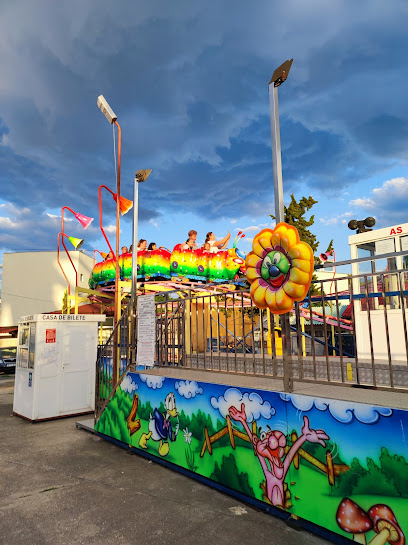
Museum of History and Archeology
Explore the rich heritage of Mangalia at the Museum of History and Archeology, where history comes alive through captivating artifacts and exhibits.

The Genoese Lighthouse
Explore the Genoese Lighthouse in Mangalia, a historic beacon offering stunning sea views and a glimpse into Romania's maritime heritage.
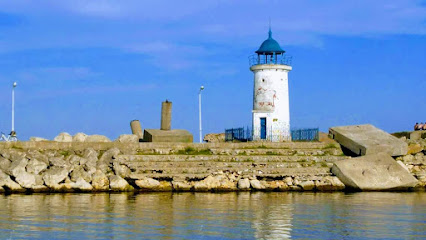
The Monument of Youth
Explore the Monument of Youth in Straja, Romania - a breathtaking tribute to resilience surrounded by stunning natural beauty.

La Adam Cave
Unveil the mysteries of La Adam Cave, a stunning natural wonder in Romania filled with breathtaking formations and rich historical significance.

Peștera Limanu
Explore the stunning Peștera Limanu, a natural wonder in Romania filled with breathtaking rock formations and rich biodiversity, perfect for adventurers and nature lovers.

La Lebede
Experience the allure of La Lebede in Eforie Sud - a perfect blend of scenic beauty, local cuisine, and vibrant seaside culture.
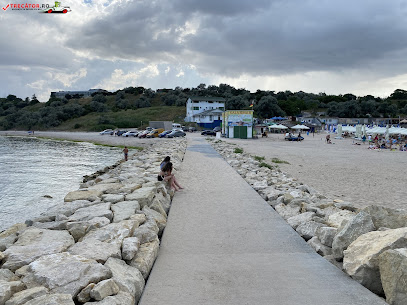
Piațeta Decebal
Explore Piața Decebal, a vibrant cultural hub in Medgidia, Romania, where history meets modern charm and local traditions thrive.

Ramp
Discover the Ramp, a stunning tourist attraction in Romania, where adventure meets stunning landscapes and rich cultural heritage.

Digul Capul Turcului (ESN2)
Explore the scenic beauty and rich history of Digul Capul Turcului, a must-see attraction along the stunning Romanian coastline.

Sens Giratoriu Constanta Sud
Explore Sens Giratoriu Constanta Sud, a vibrant tourist attraction in Romania, where scenic views and local culture await every traveler.

View bench Limanu
Experience breathtaking sunsets and serene landscapes at the View Bench in Limanu, a hidden gem for nature lovers and photographers.

Puntea Lebedelor
Explore Puntea Lebedelor, a serene tourist attraction in Neptun, Romania, perfect for nature lovers seeking tranquility and stunning landscapes.

Dudu Pletos
Discover the vibrant cultural heritage of Constanța at Dudu Pletos, a captivating tourist attraction offering a unique local experience.

Essential places to dine
Pescăria lui Matei
Discover authentic Romanian seafood at Pescăria lui Matei in Agigea - where fresh flavors meet stunning coastal views.

Golful Pescarilor
Experience exquisite seafood dining at Golful Pescarilor in Agigea - where fresh flavors meet stunning coastal views.
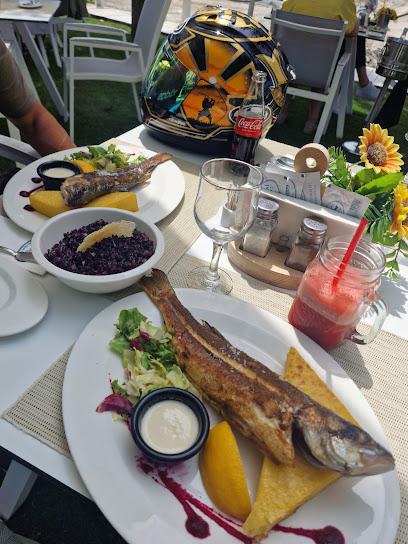
Irish Pub
Discover the vibrant ambiance of Irish Pub in Constanța – where traditional flavors meet lively entertainment.

Bacaro
Experience exquisite coastal dining at Bacaro in Constanța, where local flavors meet stunning seaside views for an unforgettable culinary journey.

Forest M - Restaurant&Terasa, Salon Evenimente, Cazare
Experience authentic Romanian cuisine at Forest M - where tradition meets comfort in Valu lui Traian.

PUIU'S (Cazemata)
Discover exquisite seafood dining at Puiu's (Cazemata), where fresh flavors meet breathtaking views along Faleza Mangalia.

Terasa Andreea
Experience authentic Romanian cuisine with stunning seaside views at Terasa Andreea in Constanța.

Restaurant Ballroom La Povești
Experience authentic Romanian flavors at Restaurant Ballroom La Povești in Murfatlar – where culinary traditions meet warm hospitality.

Hanul cu Pește
Experience authentic Romanian seafood at Hanul cu Pește in Mamaia-Sat – where fresh flavors meet stunning seaside views.
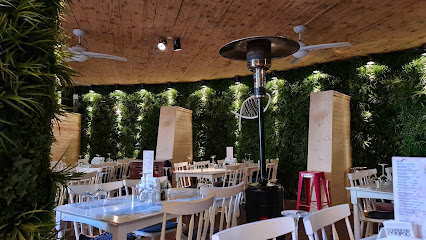
Restaurant Insula
Experience exquisite dining at Restaurant Insula in Neptun, where fresh seafood meets traditional Romanian flavors amidst stunning coastal views.

Cherhana Venus
Discover Cherhana Venus: A top seafood restaurant offering exquisite dishes with stunning Black Sea views in Romania's beautiful coastal resort.

Le Premier
Experience exquisite seafood dining at Le Premier in Constanța – where freshness meets elegance.

Restaurant BELUGA
Savor exquisite Italian and seafood cuisine at Restaurant BELUGA in Eforie Sud - A must-visit dining destination for all food lovers.
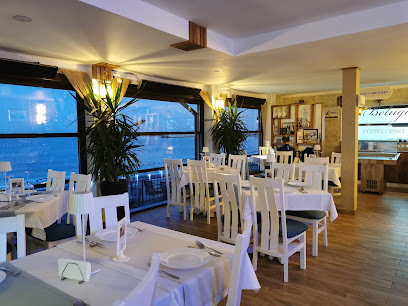
Restaurant Luxor
Discover the rich flavors of Romanian cuisine at Restaurant Luxor in Medgidia, where every dish tells a story.

Tanța și Costel
Experience authentic Romanian cuisine at Tanța și Costel in Medgidia – where tradition meets modern dining.

Markets, malls and hidden boutiques
City Park Mall
Discover the ultimate shopping and entertainment experience at City Park Mall in Constanța, where fashion meets fun for all ages.

Tomis Antiques
Explore Tomis Antiques in Constanța for a unique blend of history and collectibles, featuring authentic Romanian crafts and international treasures.

Dragomir Market
Discover the authentic Romanian flavors at Dragomir Market, a vibrant food store in Ciocârlia offering fresh produce and local delicacies.

La doi paşi
Discover the local flavors and essentials at La doi paşi, the charming convenience store in the heart of Ciocârlia de Sus, Romania.

Miorița Market
Discover local flavors and vibrant culture at Miorița Market, a must-visit supermarket in Ciocârlia, Romania.

Pepco
Explore Pepco in Cobadin for affordable clothing, baby essentials, home goods, and toys, perfect for families and savvy shoppers alike.

Dedy Com Invest
Explore Dedy Com Invest in Amzacea, where organic meets delicious in a sustainable shopping experience.

Nostalgia Vintage Shop
Explore unique vintage fashion at Nostalgia Vintage Shop in Constanța, where timeless styles and stories come to life.

SC Alternativa Bio SRL
Explore the heart of Romanian culture at SC Alternativa Bio SRL, a boutique offering organic products and local crafts in Deleni.

Пазар-събота
Explore the lively Пазар-събота in General Scărișoreanu for local goods, delicious food, and a vibrant cultural experience.

Anca Market
Discover the flavors of Romania at Anca Market, a boutique food store in Siminoc offering gourmet delights and local specialties.

Dobrogea Plateau
Explore the breathtaking landscapes and rich biodiversity of the Dobrogea Plateau, a hidden gem in Romania perfect for outdoor adventures.

Ard aliment
Explore Casicea's local flavors at Ard Aliment, a charming grocery store offering authentic Romanian products and a taste of local culture.

MAGAZIN ALIMENTAR PFA CIOC VASILICA
Explore the essence of Romanian culture at MAGAZIN ALIMENTAR PFA CIOC VASILICA, a boutique store offering local delicacies and unique handcrafted treasures.

Flo
Discover unique gifts and local crafts at Flo, the perfect souvenir shop in Constanța, Romania, capturing the essence of your travels.

Essential bars & hidden hideouts
Barissimo
Experience the vibrant flavors of Constanța at Barissimo, a gastropub offering a unique fusion of local and international cuisine in a lively atmosphere.

Noble Lounge & Bar
Discover the charm of Noble Lounge & Bar in Constanța, where exquisite drinks meet a cozy atmosphere for the perfect relaxation experience.

LA BELLA
Discover LA BELLA, Comana's vibrant bar, where local flavors meet a lively atmosphere for an unforgettable night out.

Crazy Beach Jet
Discover the lively atmosphere and stunning views at Crazy Beach Jet, the perfect bar for relaxation and socializing in Venus.
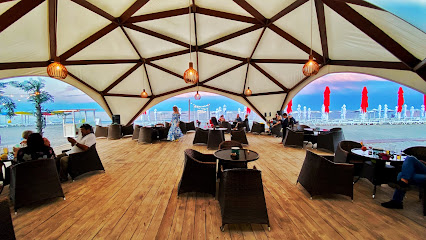
Irish Pub
Discover the charm of Irish hospitality in Medgidia at the Irish Pub, where hearty drinks and local flavors await you.

Centru
Discover the vibrant nightlife at Centru in Dulcești, Romania, where cozy ambiance meets a diverse selection of drinks for a memorable evening.
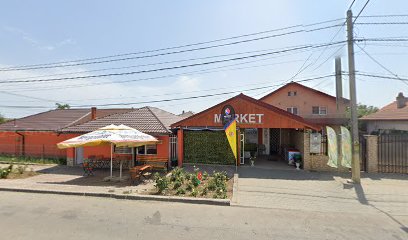
Terasa bar
Discover Terasa Bar in Eforie Sud: a perfect blend of relaxation, local flavors, and stunning views along the Romanian coast.

Bar GEICU
Experience the vibrant atmosphere of Bar GEICU in Plopeni - a local favorite for drinks, snacks, and unforgettable evenings.

Bar Basarabia Romania
Discover Bar Basarabia in Mangalia, Romania: A cozy bar offering delightful drinks and a vibrant atmosphere for tourists and locals alike.
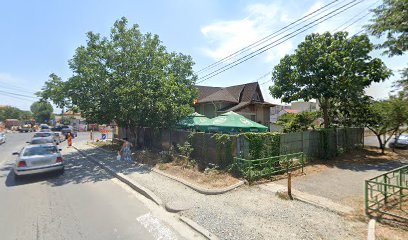
Bar
Discover the vibrant nightlife at this charming bar in Constanta, where local drinks and a warm atmosphere await every visitor.

Hercinia Brewery
Discover the art of brewing at Hercinia Brewery in Constanța, where craft beer meets local cuisine in a vibrant atmosphere.

Bar de Magnum Sala De Jocuri
Discover the lively Bar de Magnum Sala De Jocuri in Murfatlar, where drinks, games, and a vibrant atmosphere await.

The Rustic Pub
Experience the warm ambiance and delightful cuisine at The Rustic Pub in Castelu, a must-visit for food lovers and socializers alike.

Simcador Bar
Discover the charm of Simcador Bar in Murfatlar, where local flavors and a cozy atmosphere await every visitor.

Mini Terasa Blackie
Discover the serene beauty and vibrant atmosphere at Mini Terasa Blackie, a perfect bar experience in Romania.

Local Phrases about Dobrogea Plateau
-
- HelloSalut
[sah-LOOT] - GoodbyeLa revedere
[lah reh-veh-DEH-reh] - YesDa
[dah] - NoNu
[noo] - Please/You're welcomeTe rog
[teh rohg] - Thank youMulțumesc
[mool-tsoo-MESK] - Excuse me/SorryScuzați-mă
[skoo-ZAHTS mah] - How are you?Ce mai faci?
[cheh my fahch?] - Fine. And you?Bine. Și tu?
[bee-neh. shee too?] - Do you speak English?Vorbiți engleză?
[vohr-BEETZ een-gleh-zah?] - I don't understandNu înțeleg
[noo uhn-tseh-leg]
- HelloSalut
-
- I'd like to see the menu, pleaseAș vrea să văd meniul, vă rog
[ahsh vreh sah vuhd meh-nyool, vuh rohg] - I don't eat meatNu mănânc carne
[noo muh-NAHNC kahr-neh] - Cheers!Noroc!
[noh-ROHK] - I would like to pay, pleaseAș dori să plătesc, vă rog
[ahsh doh-ree sah pluh-TEHSK, vuh rohg]
- I'd like to see the menu, pleaseAș vrea să văd meniul, vă rog
-
- Help!Ajutor!
[ah-ZHOO-tohr] - Go away!Du-te!
[doo-teh] - Call the Police!Sunați poliția!
[soo-NAHTS poh-LEE-tseeah] - Call a doctor!Sunați un doctor!
[soo-NAHTS oon dohk-TOHR] - I'm lostM-am rătăcit
[mahm ruh-tuh-CHEET] - I'm illSunt bolnav
[soont bohl-NAHV]
- Help!Ajutor!
-
- I'd like to buy...Aș vrea să cumpăr...
[ahsh vreh sah koom-PUR...] - I'm just lookingDoar mă uit
[doh-AHR muh ooit] - How much is it?Cât costă?
[kaht kohs-TAH?] - That's too expensiveEste prea scump
[ehs-teh preh skoomp] - Can you lower the price?Puteți să scădeți prețul?
[poo-TEHTS sah skuh-DEHTS preh-TSOOL?]
- I'd like to buy...Aș vrea să cumpăr...
-
- What time is it?Cât este ora?
[kaht yehs-teh oh-RAH?] - It's one o'clockEste ora unu
[ehs-teh oh-RAH oo-noo] - Half past (10)O jumătate (10)
[oh joo-muh-TAH-teh (doh-ZECE)] - MorningDimineața
[dee-mee-neh-TSAH] - AfternoonDupă-amiază
[doo-PAH ah-mee-ah-ZAH] - EveningSeara
[seh-AH-rah] - YesterdayIeri
[yeh-ree] - TodayAstăzi
[ahs-TUHZ] - TomorrowMâine
[muh-YNEH] - 1Unu
[OO-noo] - 2Doi
[doy] - 3Trei
[tray] - 4Patru
[PAH-troo] - 5Cinci
[CHEEN-chee] - 6Șase
[shah-seh] - 7Șapte
[shahp-teh] - 8Opt
[opt] - 9Nouă
[noo-uh] - 10Zece
[zeh-cheh]
- What time is it?Cât este ora?
-
- Where's a/the...?Unde este unul/una...?
[OON-deh yehs-teh OO-noo/OO-nah...?] - What's the address?Care este adresa?
[KA-reh yehs-teh ah-DREH-sah?] - Can you show me (on the map)?Puteți să-mi arătați (pe hartă)?
[poo-TEHTS suh-mee ah-RAH-TAHTS (peh HAHR-tuh)?] - When's the next (bus)?Când este următorul (autobuz)?
[kahnd yehs-teh oor-MAH-toh-rool (ow-TOH-booz)?] - A ticket (to ....)Un bilet (spre ....)
[oon bee-LET (spreh ....)]
- Where's a/the...?Unde este unul/una...?
History of Dobrogea Plateau
-
Around the 7th century BCE, Greek colonies were established along the Black Sea coast of Dobrogea, most notably Histria, Tomis (modern-day Constanța), and Callatis (Mangalia). These colonies became important trade hubs and facilitated cultural exchange between the Greeks and the indigenous Getae tribes.
-
In the 1st century BCE, the Romans conquered Dobrogea, integrating it into the province of Moesia. The region experienced significant development under Roman rule, with the establishment of cities, roads, and fortifications. Notable sites from this era include the ancient city of Tropaeum Traiani, built to commemorate Emperor Trajan's victory over the Dacians.
-
After the fall of the Western Roman Empire, Dobrogea remained under the control of the Eastern Roman (Byzantine) Empire. The Byzantines fortified the region to defend against invasions and continued to influence the local culture and religion. The ruins of early Christian basilicas in places like Niculițel stand testament to this period.
-
In the late 7th century, the First Bulgarian Empire extended its influence over Dobrogea. The region became a battleground between the Bulgarians and the Byzantine Empire, with control frequently shifting between the two powers. The Bulgarian presence introduced Slavic culture and Orthodox Christianity to the area.
-
Dobrogea fell under Ottoman control in the late 15th century and remained part of the Ottoman Empire for over four centuries. The Ottomans left a lasting impact on the region's architecture, cuisine, and cultural practices. Mosques, such as the Esmahan Sultan Mosque in Mangalia, are remnants of this era.
-
Following the Russo-Turkish War of 1877-1878, Dobrogea was ceded to Romania as part of the Treaty of Berlin. This period marked significant modernization and integration into the Romanian state. The construction of the Cernavodă Bridge over the Danube River in 1895 was a major milestone in connecting Dobrogea with the rest of Romania.
-
During World War II, Dobrogea was a strategic region due to its proximity to the Black Sea. After the war, it fell under Soviet influence as part of Romania's inclusion in the Eastern Bloc. The region saw industrial development and collectivization during the communist era, which greatly altered its socio-economic landscape.
-
Since the fall of communism in 1989, Dobrogea has undergone significant transformation. The region has developed as a major tourist destination, leveraging its rich history, diverse culture, and natural beauty. Efforts to preserve historical sites and promote cultural heritage have become central to local development strategies.
Dobrogea Plateau Essentials
-
Dobrogea Plateau is located in the southeastern part of Romania. The nearest major city with an international airport is Constanța, served by Mihail Kogălniceanu International Airport. From Constanța, you can rent a car or take a bus to explore the plateau. Alternatively, you can fly into Bucharest and take a train or bus to Constanța, and then proceed to Dobrogea Plateau.
-
While exploring Dobrogea Plateau, renting a car is the most convenient option as it allows flexibility in visiting remote areas. Public buses and minibuses (maxi-taxis) connect major towns, but schedules can be irregular. Bicycles can also be rented in some areas for a more eco-friendly way to explore. Taxis are available but may be harder to find in rural areas.
-
The official currency of Romania is the Romanian Leu (RON). Credit cards are widely accepted in urban areas, hotels, and larger restaurants. However, it is advisable to carry cash, especially when traveling to rural parts of the plateau. ATMs are available in larger towns, but it is wise to withdraw sufficient cash before heading into more remote areas.
-
Dobrogea Plateau is generally safe for tourists. However, like any travel destination, it is advisable to take standard precautions. Avoid walking alone at night in unfamiliar areas and keep an eye on your belongings in crowded places. While crime rates targeting tourists are low, always stay vigilant and aware of your surroundings.
-
In case of an emergency, dial 112 for immediate assistance, which is the European emergency number. The local police stations and medical facilities are available in larger towns like Constanța and Tulcea. Make sure to have travel insurance that covers medical emergencies. Pharmacies are available in most towns for minor health issues and over-the-counter medications.
-
Fashion: Do dress modestly, especially when visiting religious sites. Avoid wearing overly revealing clothing. Religion: Do respect local customs and traditions. Always cover your head when entering churches and monasteries. Public Transport: Do be respectful and give up your seat to elderly passengers. Don't eat or drink on public transport. Greetings: Do greet people with a handshake. A slight bow of the head is also a sign of respect. Eating & Drinking: Do try local delicacies and accept food offerings graciously. Don't refuse hospitality, as it is considered impolite.
-
To experience Dobrogea Plateau like a local, visit the local markets where you can buy fresh produce and traditional Romanian goods. Engage with locals, as they are often friendly and willing to share stories about the area's history and culture. Don't miss visiting the ancient ruins of Histria and the Enisala Fortress for a glimpse into the region's rich history. For nature lovers, the Danube Delta offers unique wildlife and stunning landscapes.
Nearby Cities to Dobrogea Plateau
-
Things To Do in Varna
-
Things To Do in Shumen
-
Things To Do in Bucharest
-
Things To Do in Burgas
-
Things To Do in Ruse
-
Things To Do in Focsani
-
Things To Do in Gabrovo
-
Things To Do in Stara Zagora
-
Things To Do in Brasov
-
Things To Do in Pitesti
-
Things To Do in Pleven
-
Things To Do in Haskovo
-
Things To Do in Râmnicu Vâlcea
-
Things To Do in Tiraspol
-
Things To Do in Istanbul













